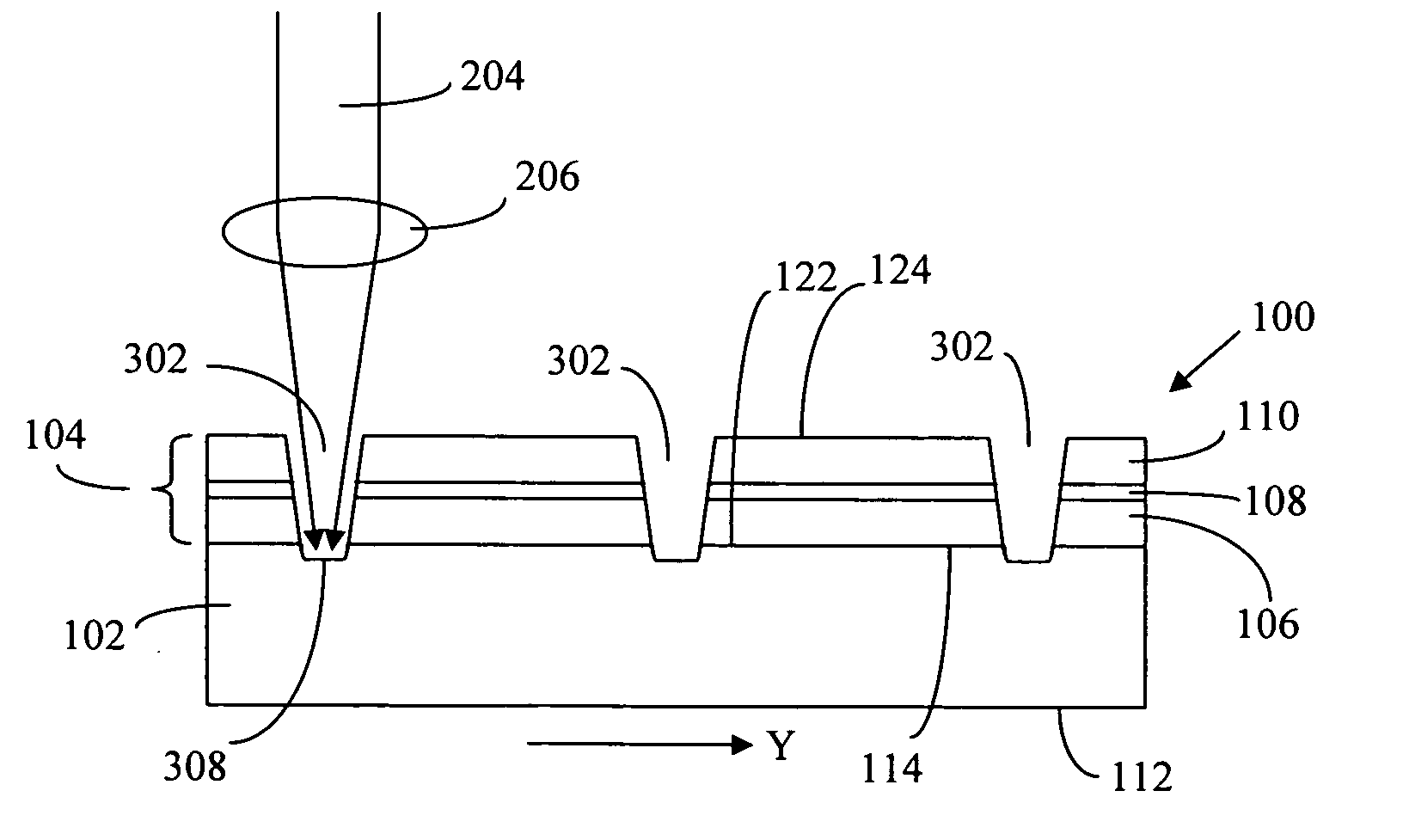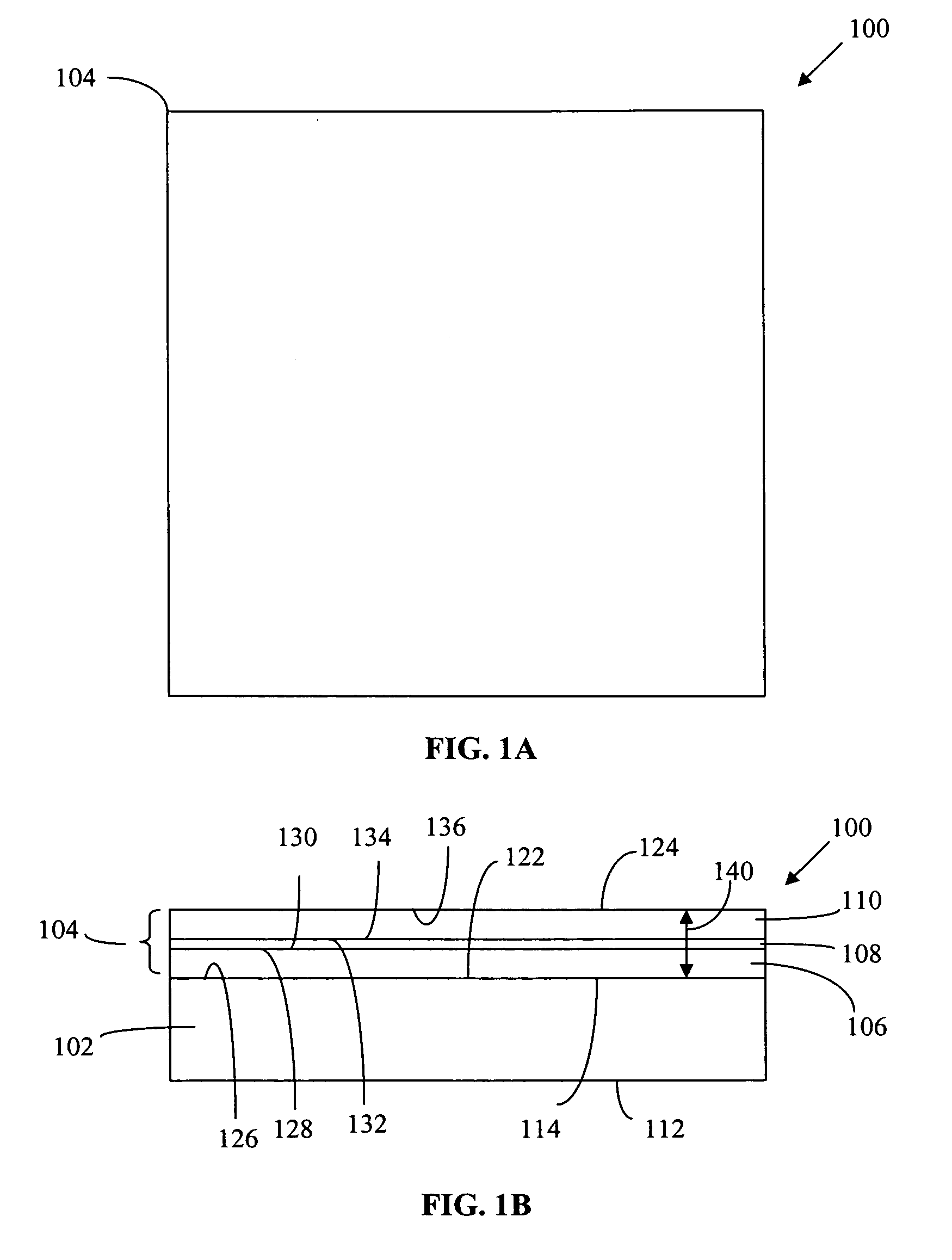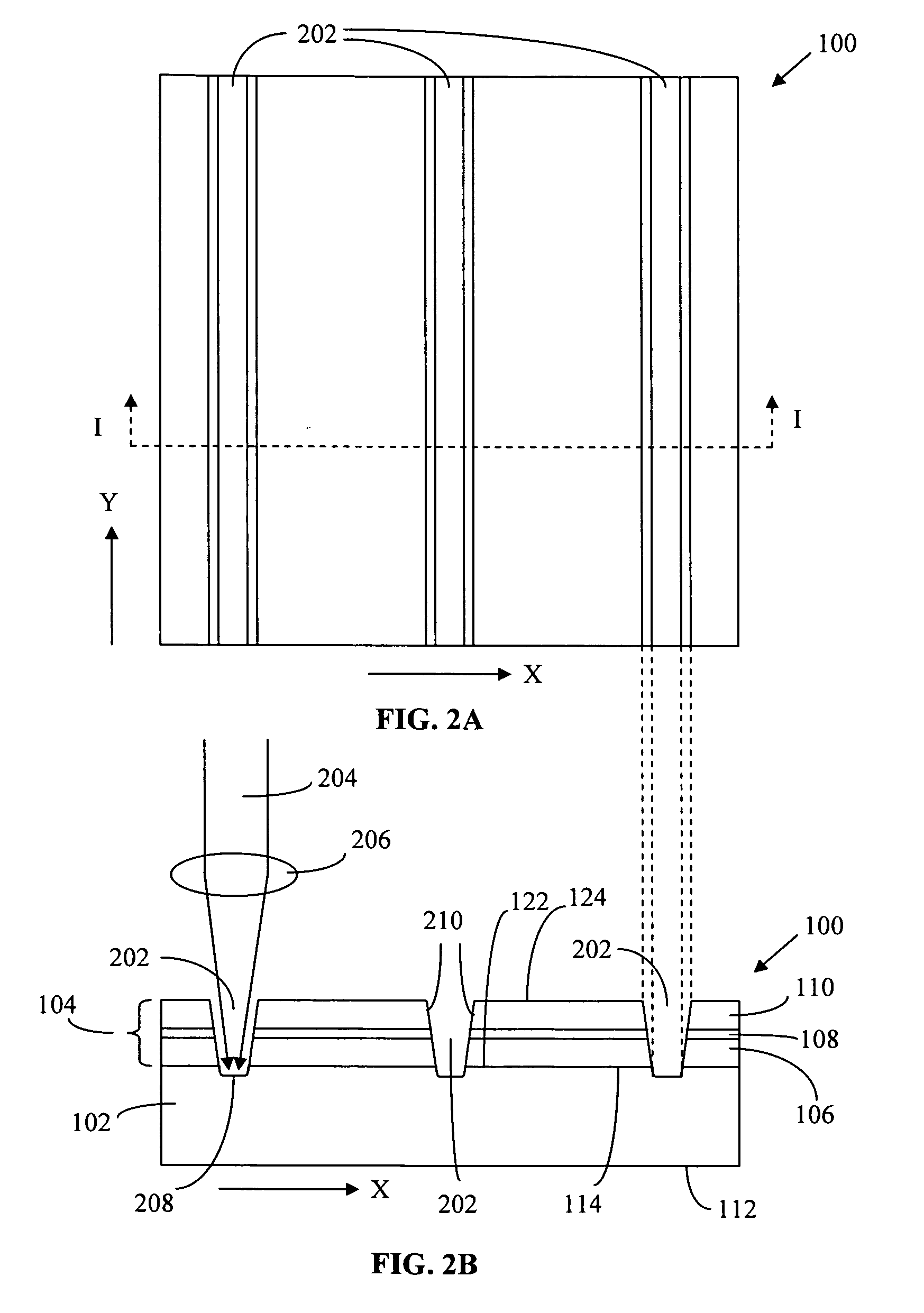Method for fabricating a light emitting diode chip
a light-emitting diode and chip technology, applied in semiconductor/solid-state device manufacturing, electrical equipment, semiconductor devices, etc., can solve the problems of difficult etching of thick layers of gan-based materials, reducing the light output and operating life of leds, and relatively slow growth methods
- Summary
- Abstract
- Description
- Claims
- Application Information
AI Technical Summary
Benefits of technology
Problems solved by technology
Method used
Image
Examples
Embodiment Construction
[0047]The preferred embodiments of the present invention will be better understood by those skilled in the art by reference to the above listed figures. The preferred embodiments of this invention illustrated in the figures are not intended to be exhaustive or to limit the invention to the precise form disclosed. The figures are chosen to describe or to best explain the principles of the invention and its applicable and practical use to thereby enable others skilled in the art to best utilize the invention.
[0048]One embodiment of this invention is a method for fabricating a thick LED semiconductor structure chip. The LED chip is at least 10 microns thick and does not need the original growth substrate or an attached transfer substrate for structural support.
[0049]The first step to form a thick LED chip is to provide an assembly that includes a multilayer semiconductor structure on an optically transparent growth substrate. FIGS. 1A and 1B illustrate assembly 100 that includes a grow...
PUM
 Login to View More
Login to View More Abstract
Description
Claims
Application Information
 Login to View More
Login to View More - R&D
- Intellectual Property
- Life Sciences
- Materials
- Tech Scout
- Unparalleled Data Quality
- Higher Quality Content
- 60% Fewer Hallucinations
Browse by: Latest US Patents, China's latest patents, Technical Efficacy Thesaurus, Application Domain, Technology Topic, Popular Technical Reports.
© 2025 PatSnap. All rights reserved.Legal|Privacy policy|Modern Slavery Act Transparency Statement|Sitemap|About US| Contact US: help@patsnap.com



